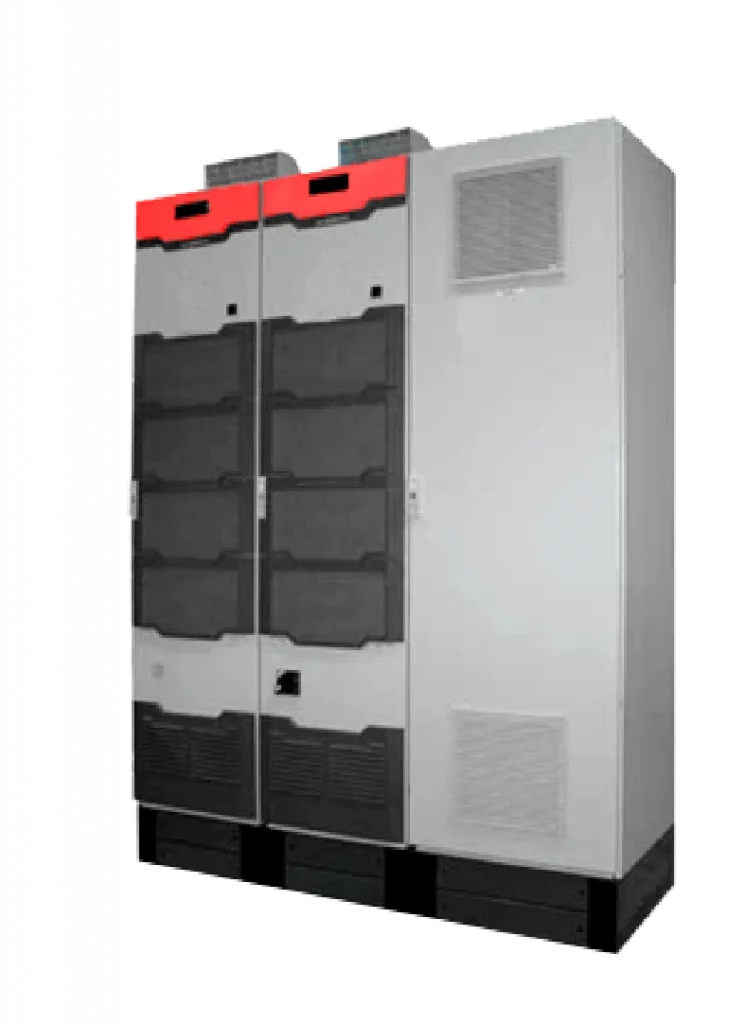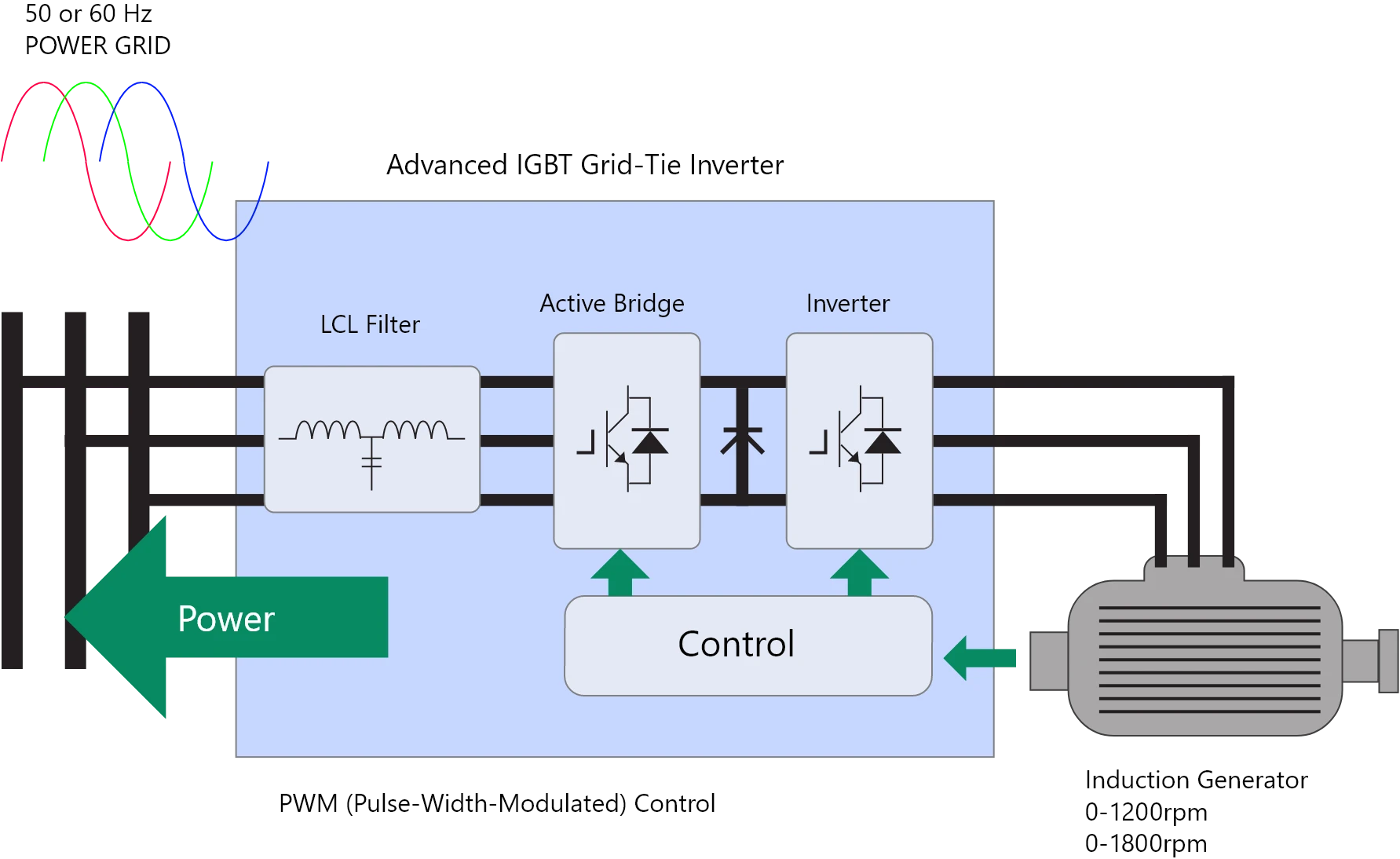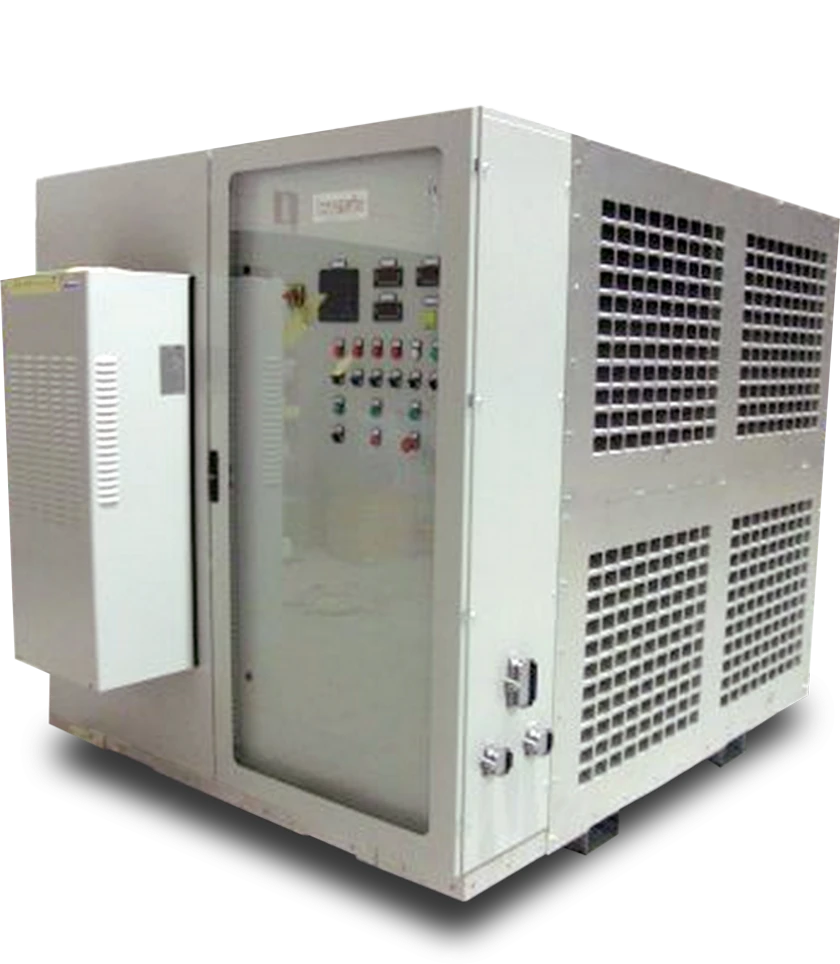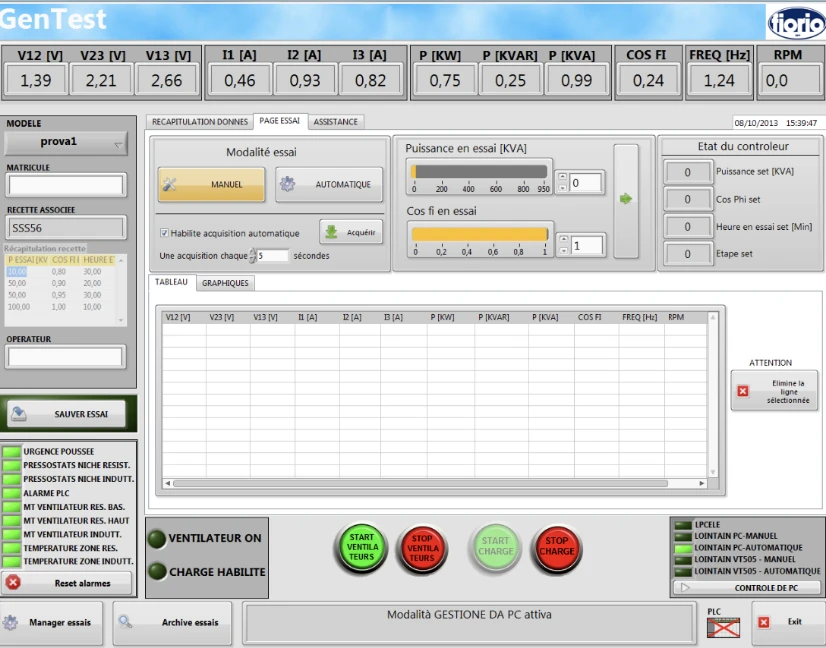
PWM converter-based active load banks in which the load is regulated by a PWM converter and the power is dissipated to the internal or public power grid via the AFE (Active Front End) module. The ALR load is continuously variable in power with 1% resolution, cos-phi (0 inductive to 1 up to 0 capacitive), frequency (40 to 400 Hz) and voltage (up to 690 V), max. distortion 3% (IEEE 519 standard directives)
Load control is via a PWM converter system appropriately filtered at the input to achieve a better distortion level than that of the public grid, a second PWM converter for regeneration and synchronisation with the public grid (AFE), including a filtering and isolation system for the eventual resale of the energy to the grid operator
The advantage over a passive load:
very small footprint (no dissipative elements or fans)
silent (there are no dissipative elements or fans)
cos-phi variable at will from 0 inductive to 1 and from 0 capacitive to 1
Variable voltage from 0 to 690 V, variable power from 0 to Pmax (1% resolution)
variable frequency between 40 and 400 Hz (special applications for higher frequencies possible)
forme d’onda con distorsioni migliori della rete pubblica (THD < 3%)
regeneration in the grid (the grid acts as a load) with the possibility of selling the energy back to the operator

Active dissipative load banks in which load regulation is delegated to a PWM converter and power dissipation is delegated to a resistive load. The ALD load is variable in power (1% resolution), cos-phi (from 0 inductive to 1 up to 0 capacitive), frequency (40 to 400 Hz) and voltage (up to 690 V), max. distortion 3% (IEEE 519 directives), equipped with a resistive load instead of the AFE regenerative module.
Dissipation is via a PWM inverter system suitably filtered at the input to achieve a distortion level better than that of the public grid, a ventilated resistive load of the power of the generator under test (braking unit) and a DC bus precharge system in the initial phase.
The advantage over a passive load:
smaller footprint
cosphi variable at will from 0 inductive to 1 and from 0 capacitive to 1
variable voltage from 0 to 690 V, variable power from 0 to Pmax (1% resolution),
variable frequency between 40 and 400 Hz (special applications for higher frequencies possible)
forme d’onda con distorsioni migliori della rete pubblica (THD < 3%)
absence of passive reactive elements (inductances or capacitors)
forme d’onda con distorsioni migliori della rete pubblica (THD < 3%)
less construction complexity (no load step selection contactors)


MotorTEST LabVIEW® is software that enables the complete characterisation of electric motors on motor brake benches and is compatible with a wide range of market-standard control/data acquisition systems and instrumentation
Detectable quantities:
motor speed, torque, power output, voltages, currents, absorbed and apparent power, power factor, efficiency, slip, mains frequency, motor winding resistances, temperatures
Motor and brake registration data archive:
database in MS Access format into which the operator enters both the test bench settings and the registration data of the engines to be tested; The parameters selected before testing will automatically set the inverter configuration of the braking motor and the inverter configuration of the motor to be tested (high-frequency motors)
Discover more of GenTest
INTESYS Srl
Sistemi di collaudo
Viale Pasubio, 25/4 – 36030
Caldogno (Vicenza)
tel: 0444 905440
fax 0444 1830 932
info@intesys-srl.it